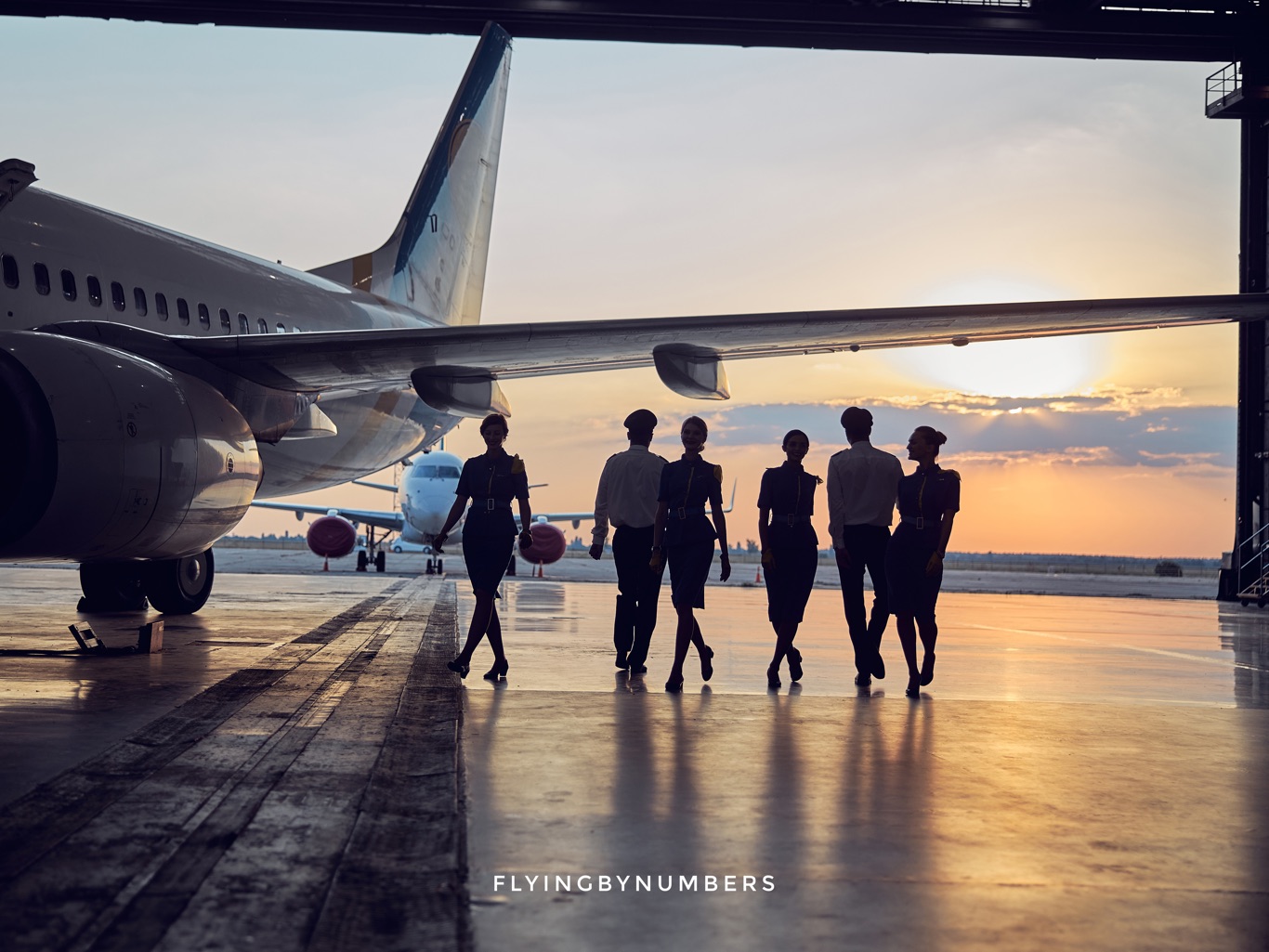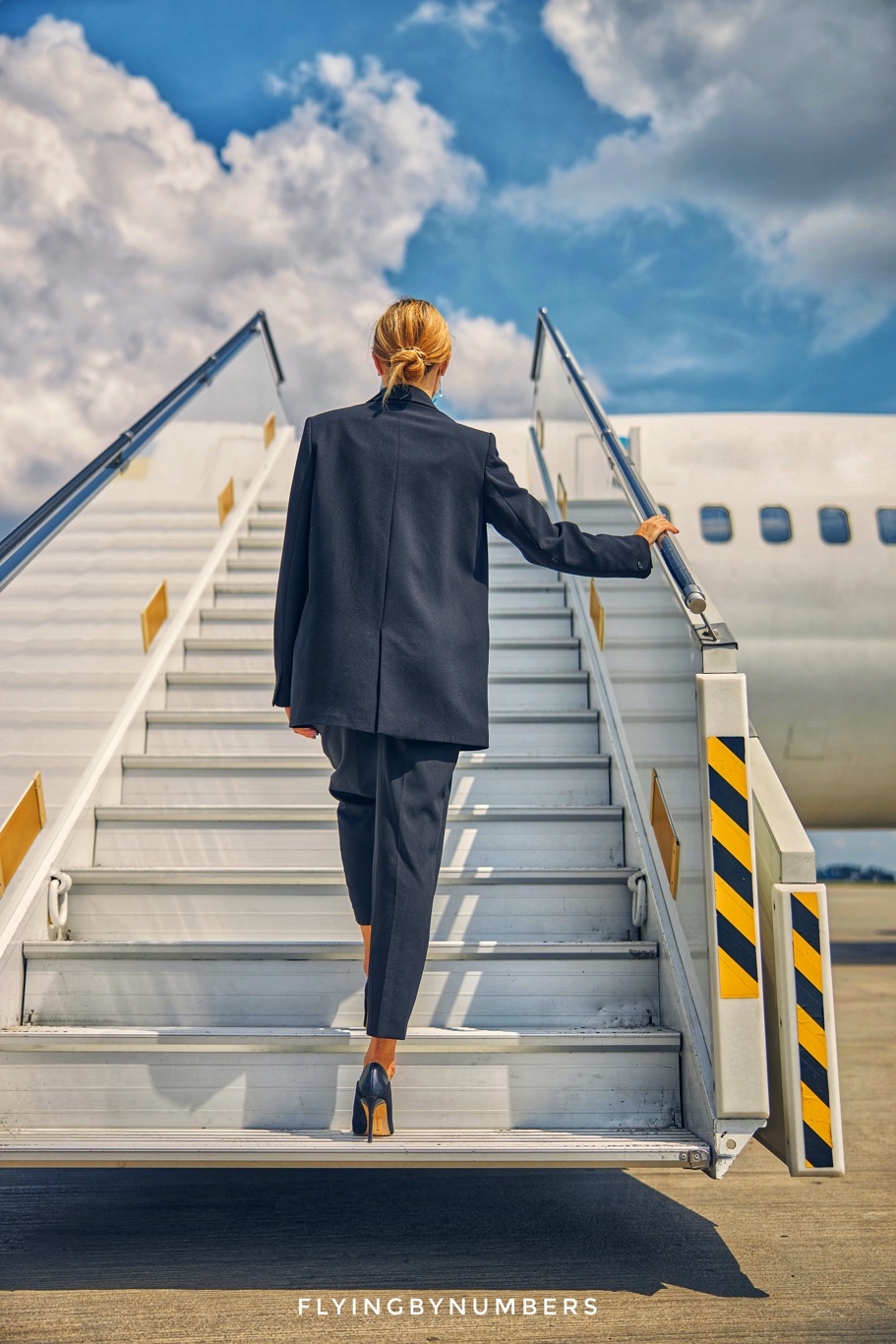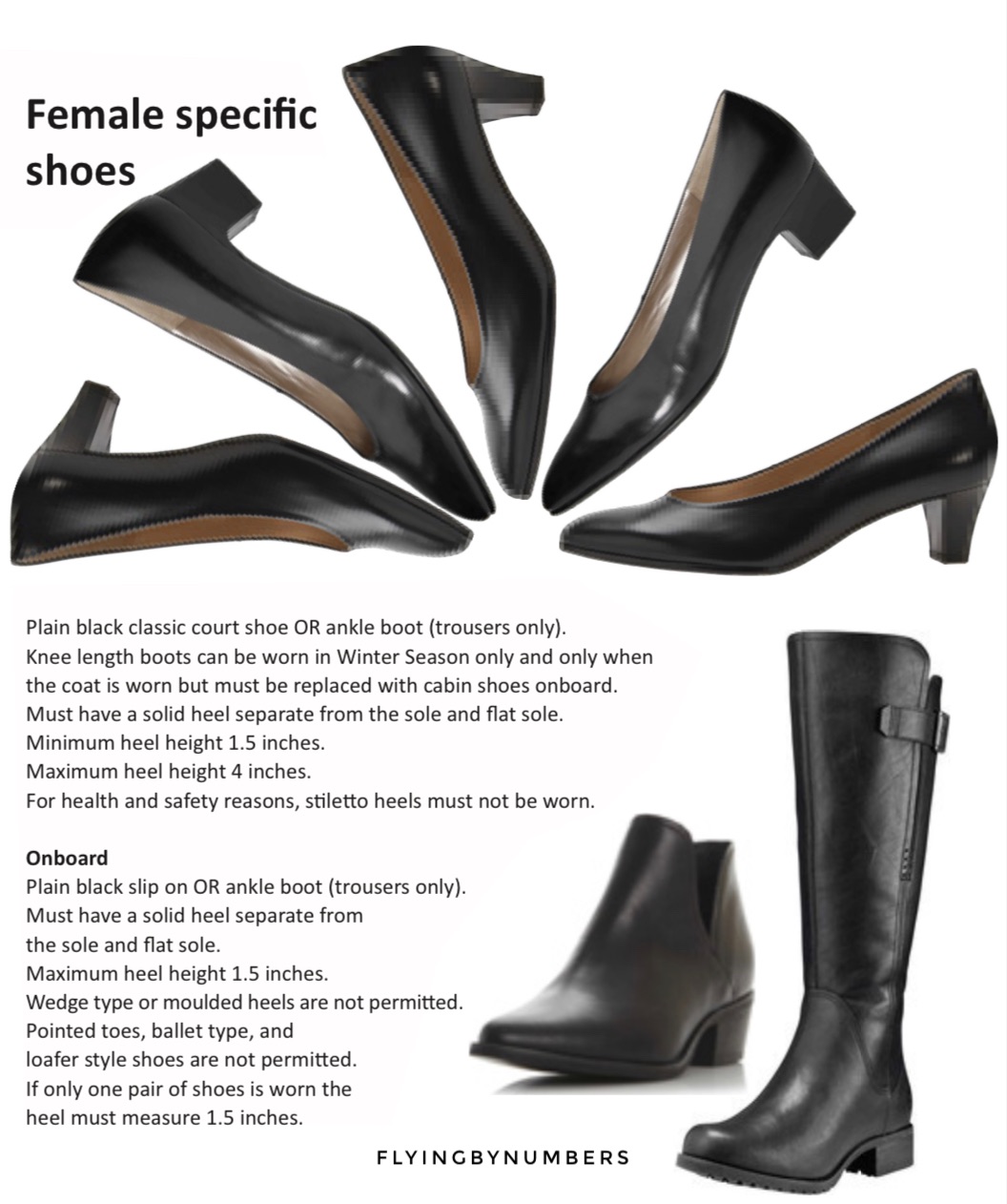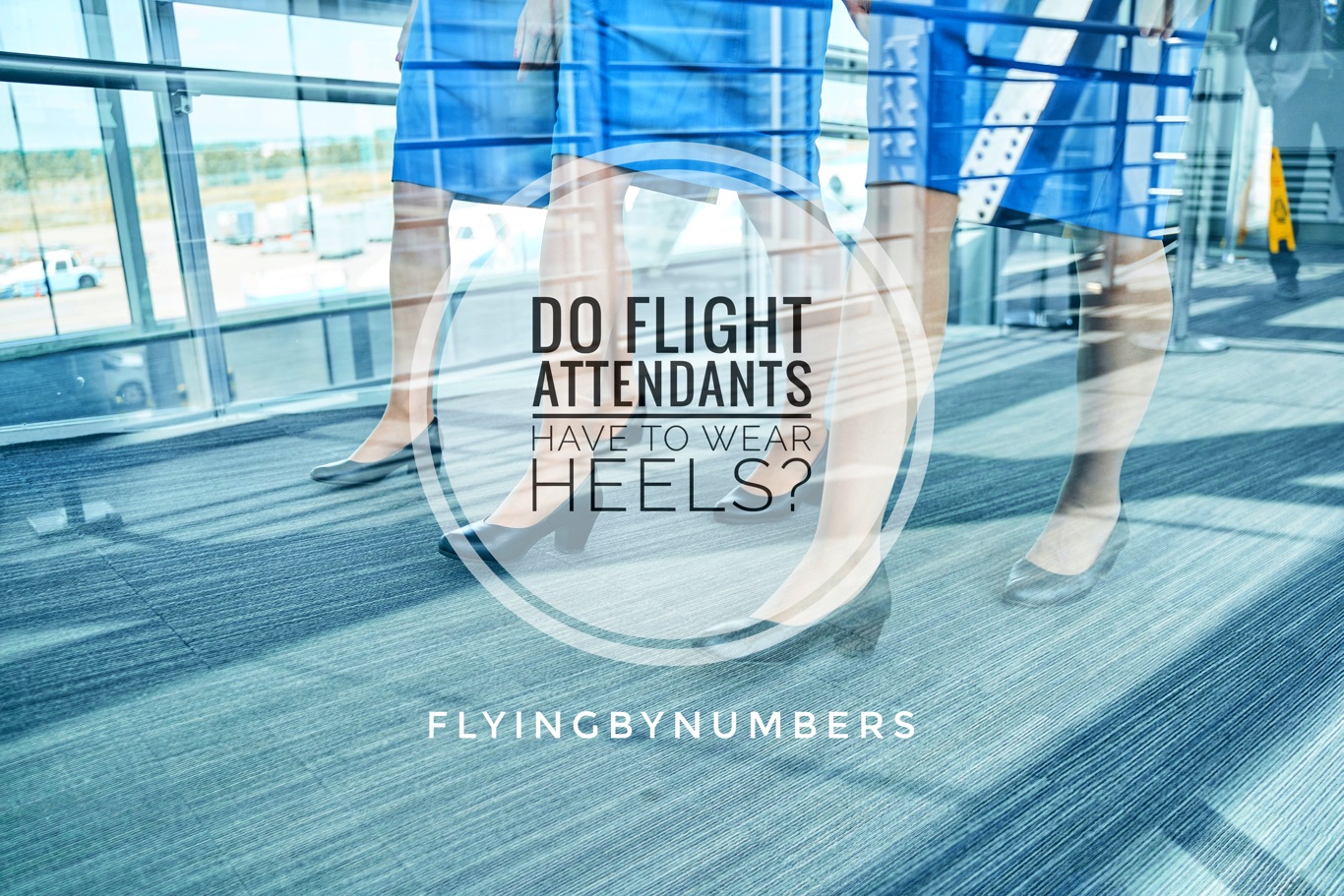Do flight attendants have to wear heels — or is this an optional requirement?
Whilst dress codes and uniform requirements for flight attendants vary by airline, most airlines do still require their female flight attendants to wear heels as part of their uniform. Airlines across the globe, from Europe to the USA, only permit flight attendants to not wear heals if they have a valid medical exemption.
However, in a drive towards modernising a once uptight industry, there are some new starter airlines with more relaxed dress codes, and some legacy carriers are also beginning to follow suit.
Did you know, alongside tattoos, piercings, and even beards, some airlines allow their flight attendants to wear comfortable and more practical footwear, including trainers!
We’ll discuss why airlines typically require their air hostesses to wear heels, and how they get around the safety implications of high-heeled footwear. We’ll also take a look at some newer airlines that are ditching heels entirely!
Why do flight attendants have to wear high heels?
Despite pushback from modern airlines, union staff, and the feminist movement, in many countries in the world, including the UK, Japan, and the USA (with caveats) it is perfectly legal to require staff to wear high-heels for work.
As a result, many airlines, including de-facto flag carriers such as, Iberia, British Airways, Japan Airlines and American Airlines, require their flight attendants to wear high heels as part of their uniform.
The reason many airlines require their female flight attendants to wear heels is for brand imaging. Yes, the modern aviation product has changed beyond all recognition. However, airlines are keen to use the strong imagery associated with the industries earlier — and significantly more luxurious — era, in their uniform styles and branding.
Since the first-ever commercial flight attendants were employed in the 1930s, they have been known for looking ‘glamorous’. There has been a continual expectation for them to wear stylish outfits, often including high-heels for females.
Heels on an air stewardess… is that really needed? — The Courier

Do flight attendants wear heels onboard the aircraft?
No. Flight attendants typically wear heels only during the boarding process and while they are on the ground, such as at the airport or during layovers.
Once the flight is in the air, flight attendants will change into more comfortable shoes, such as lower heels, flat shoes, or even trainers.
This is for two reasons:
- Primarily, because flight attendants need to be able to move around the cabin quickly and comfortably, especially during turbulence or in the event of an emergency. Wearing high-heels during the flight could impede their ability to perform their duties and could also be a safety hazard.
- Secondly, during an emergency evacuation, it is required that high heels are removed before using the inflatable exit slides. Not only may pointed heels damage the slides, exiting the slides is done at a very fast pace and ankle injuries are common.

A female crew member can’t use the flat shoes unless she is doing on-board service related duties. For boarding and disembarking of customers, a crew member would have her high or medium heels on and later on, after take-off, she would change into her more comfortable shoes.
Emirates Airline’s high-heel policy
Airlines that have ditched heels
Lately, there has been a growing trend of airlines relaxing their dress code and uniform requirements, including allowing female flight attendants to wear more comfortable and practical footwear.
Established airlines that have removed the requirement for high-heels include:
In 2018, Air Canada announced that it was updating its uniform policy to allow female flight attendants to wear either heels or flats, depending on their preference. This change was made in response to feedback from employees who expressed discomfort and health concerns about wearing heels for extended periods.
Virgin Atlantic announced that it was abolishing its requirement for female cabin crew to wear high-heels or makeup and would also be providing female flight attendants with the option to wear trousers as part of their uniform back in 2019.
American United Airlines, and Delta Air Lines both used the pandemic to shake up their once-strict uniform policy. Updates allowed female flight attendants to wear pants as and also introduced a new range of comfortable and practical footwear options, including sneakers and loafers.
Not wanting to be outdone by the old guard, many of the newest startup airlines have uniforms that are unrecognisable from the “traditional” flight attendant look.
And, finally, like choosing your style uniforms, some airlines have opted for a rather unusual mix-and-match footwear policy!
Eurowing’s employees were gifted all-white branded Puma sneakers, but while office staff will be allowed to wear the sports shoes whenever they wish, flight attendants will only be permitted to wear the sneakers on select ‘Sneaker Flydays’.
Yet Another Airline Are Ditching High Heels For Sneakers… Kind Of — Paddleyourownkanoo
Summary
In summary, while many airlines do require their female flight attendants to wear heels, this is not longer the universal requirement it once was. Some airlines have relaxed their dress code to allow more practical footwear.
For airlines that do require heels, it is often a legal requirement that falls under uniform guidelines, and employees will be expected to follow this dress code unless they have a medical exemption.
While high heels are worn throughout the airport, flight attendants will carry a second pair of flat shoes with them to be able to switch to more comfortable footwear when onboard.

The trend away from high-heels is likely to continue, as airlines reflect on a changing public perception. Directly asking the British public, in polling in March 2022, showed that the majority of the travelling public don’t think female flight attendants should have to wear heels as part of their uniform.
Despite changing public perception, it’s a debate that’s not going anywhere anytime soon. Many airlines, and their flight attendants, enjoy the uniform — including the heels. As a result, we expect the debate surrounding high-heels to continue for decades.
For some, heels are useful “power dressing” tools for climbing the corporate ladder that boost confidence and convey authority. For others, they signify conventional notions of femininity that encourage sexual objectification.
Tracking the effects of high heels at work — Harvard





